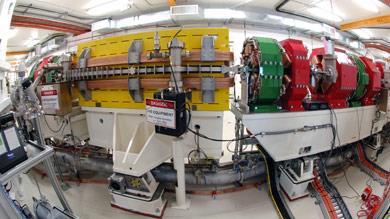Australia's only synchrotron has achieved first light, a key milestone for the facility that is due to open in April next year.
Australia’s only synchrotron has achieved first light, a key milestone for the facility that is due to open in April next year.
First light confirms that the synchrotron, housed at Monash University in Melbourne, Victoria, has achieved a sustained stream of electrons circling the storage ring at the full design energy of three billion electron volts. It was initially achieved using a fraction of the full current. Scientists are now working to strengthen the beam and get it under control.

The next stage of the project is to build the beamlines that will harvest light from the electrons for scientific experiments. Nine beamlines have been identified as a priority - high-throughput protein crystallography, protein microcrystal and small molecule diffraction, powder diffraction, small and wide angle x-ray scattering, x-ray absorption, soft x-ray spectroscopy, infrared spectroscopy, microspectroscopy and imaging and medical therapy. Of these, five will be operational when the synchrotron opens next year, with the remaining four under construction. At full capacity it will be able to accommodate 30.
Rod Hill, group executive for information, manufacturing and minerals at CSIRO, says the organisation is planning to use the synchrotron for a number of projects including drug design, polymer paints and protective coatings. He said it will be much more efficient and cheaper than using overseas facilities. It will also benefit researchers who cannot use overseas synchrotrons because of the transit times for sensitive samples or quarantine restrictions.
Karen Harries-Rees






No comments yet